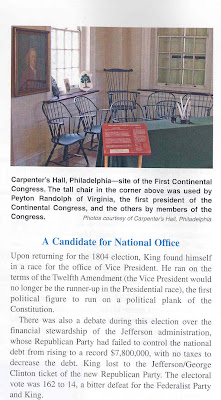The recently published Fall 2009 issue of The Archon includes a message from Headmaster John M. Doggett on the importance of preparing The Governor’s Academy students to thrive on the global level. In this message, Headmaster Doggett notes,
“We seek to prepare our students to act and lead on a global stage. Just as our students need to be technologically proficient to compete in the global marketplace, they must also be culturally and linguistically literate to be responsible world citizens. Our intention is to incorporate our uniquely American experience into a broader international context. We plan to do this not just from traditional book learning, but from capitalizing on new technologies, developing opportunities for travel and cross-cultural exchanges, language study and embedding global questions and globally focused activities in the curriculum.”
The academy currently participates in student exchanges with schools in Kenya, Honduras, China, Germany and Great Britain, and administrators hope to add exchanges with the Navajo Nation in Arizona and the African National Academy in South African in the 2010. Interestingly, the academy has fostered notable cross-cultural initiatives throughout its long history.
Representing an era of increasing technological sophistication, the 1920s expanded the opportunities for widespread travel and communication. It was in the 1920s that Charles A. Lindberg completed his pioneering flight across the Atlantic Ocean. This decade also saw mass production of the Ford Model T car, the spread of public radio stations, and the creation of movies with sound. Amidst this backdrop of technological advance, Dummer Academy students were able to travel abroad to live and study in Denmark. The attached article from the May 1927 issue of The Archon refers to an international cultural awareness program that was sponsored by Denmark’s Commissioner of Education and permitted boys from 50 leading U.S. boarding schools to travel to Denmark to live with “high class Danish families and absorb the traits of their life and customs.” The academy sent two students—William Page, a junior from Lynnfield, and James Tate, a freshman from New York—to experience cultural immersion in Denmark. The cost of this months-long program was $225.
.jpg)
.jpg)
.jpg) Andreani’s illustrations were often quite realistic, as you can see from the sketchings of 1923-1924 team captains Travis Ingham (Track), Everit "Terry" Terhune (Football), and John "Doc" Hinds (Baseball), and a photograph of the subjects, below.
Andreani’s illustrations were often quite realistic, as you can see from the sketchings of 1923-1924 team captains Travis Ingham (Track), Everit "Terry" Terhune (Football), and John "Doc" Hinds (Baseball), and a photograph of the subjects, below..jpg)
.jpg)
.jpg)
.jpg)
.jpg)
.jpg)
.jpg)
.jpg)
.jpg)
.jpg)
.jpg)
.jpg)
.jpg)


+(tc200dpi).jpg)
.jpg)
.jpg)
.jpg)
.jpg)
.jpg)
.jpg)
.jpg)
.jpg)
.jpg)
.jpg)
.jpg)
.jpg)
.jpg)
.jpg)
.jpg)






















